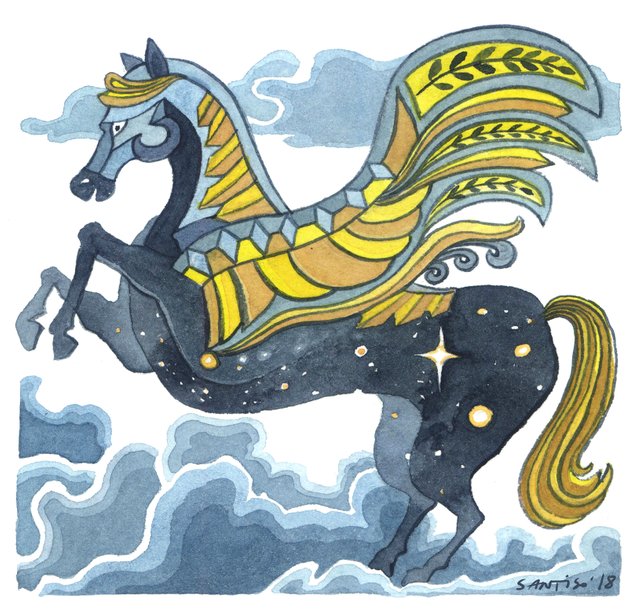Tulpar, the winged horse of Kazakhstan

Tokenized original painting of the cards collection.
Authentication: dfdfda3b7ef57bb8dd57e3ab2e94353269e688c79f9072ab13f10e00d6f4fdf9
(link to https://ardor.tools/cloud/IGNIS/dfdfda3b7ef57bb8dd57e3ab2e94353269e688c79f9072ab13f10e00d6f4fdf9)
Token ID: 11081364749529264636
(link to https://www.ardor.world/en/ignis_reporting/asset/11081364749529264636/)
CREATURE: Tulpar is the term used in Inner Asian Turkic languages to refer to winged horses. Tulpars appear in many Inner Asian legends and myths. One legend tells of how Ösküs-ool, a Tuvan folk hero, used the remains of his beloved tulpar to invent the very first fiddle. It is believed that the tulpar first originated as a symbolic combination of a horse and a bird of prey, both of which are tools used by the inhabitants of Central Asia for hunting. The tulpar is so crucial to Central Asian cultural identity that it appears in the state emblems of both Kazakhstan and Mongolia.
CULTURE: Originating from the center of Asia, the Turkic peoples spread their culture by a great world's rise, from the north of Siberia to Turkey, through migratory waves and invasions (the Huns and the Mongols, as well as the Ottomans, were peoples of the language Turkish). His nomadic way of life, based on hunting and always on the back of a horse, found a home in the steppes of Central Asia, with Kazakhstan being the most extensive Turkic country today.
Although the vast majority of Turkic people embraced Islam for many centuries, popular mythology still retains the vestiges of its earlier animist religion, where nature was inhabited by innumerable spirits like the Tulpar.
Current population (all Turkic people): 150.000.000